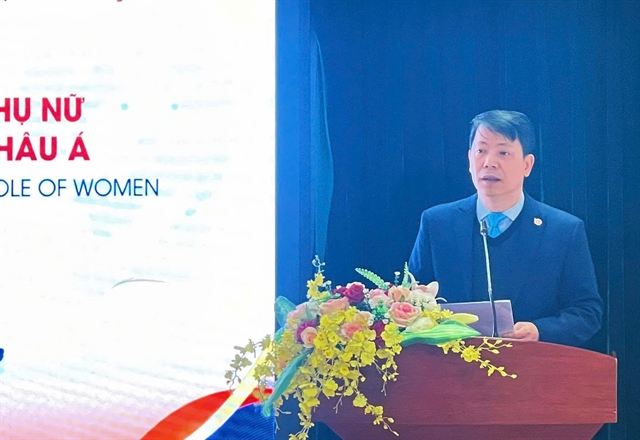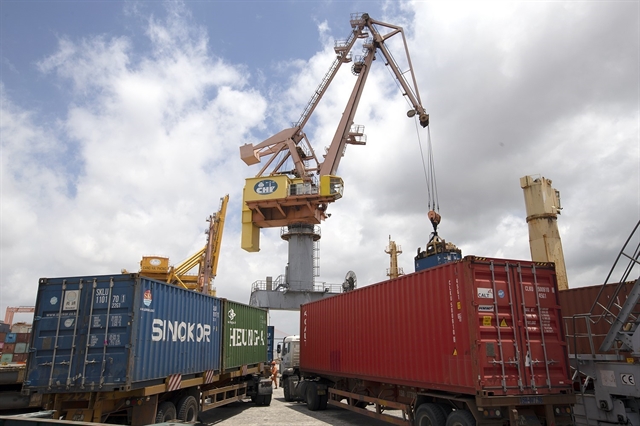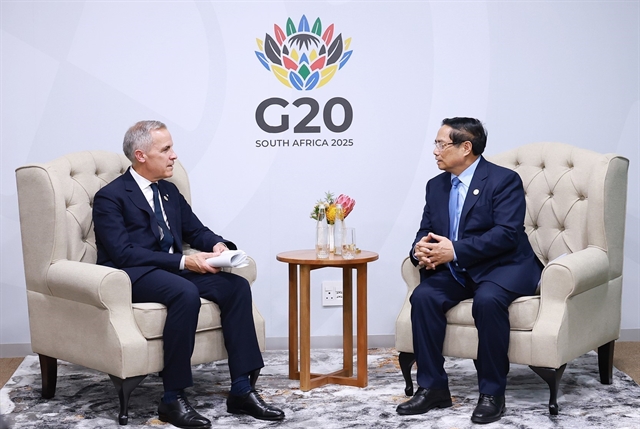 Economy
Economy

At a workshop to collect opinions on the draft of this development strategy held by the Ministry of Industry and Trade in Hà Nội on Wednesday, Trần Thanh Hải, deputy director of the Import-Export Department under the Ministry of Industry and Trade (MoIT), said that the draft also provides solutions to increase internal strength of the enterprise and have training of high-quality human resources for this industry.

|
| Container trucks are seen at Hải Phòng Port. — VNA/VNS Photo Tuấn Anh |
HÀ NỘI — The State will perfect institutions for logistics activities, and promote investment in infrastructure construction to develop logistics services, according to the draft of a development strategy for Việt Nam's logistics industry by 2030, towards 2050.
At a workshop to collect opinions on the draft of this development strategy held by the Ministry of Industry and Trade in Hà Nội on Wednesday, Trần Thanh Hải, deputy director of the Import-Export Department under the Ministry of Industry and Trade (MoIT), said that the draft also provides solutions to increase internal strength of the enterprise and have training of high-quality human resources for this industry.
This draft sets the goal of sustainable development of Việt Nam's logistics service industry with high quality and high added value services, and to have competitiveness in the region and the world.
By 2030, the logistics service industry's contribution to the national GDP will reach 6-8 per cent, and the rate of outsourcing logistics services will reach 60-70 per cent. Việt Nam will rank 45th on the Logistics Performance Index (LPI).
By 2050, this contribution to GDP will reach 12 - 15 per cent, and the rate of outsourcing logistics services will reach 70-90 per cent. The LPI will rank 30th.
Lã Hoàng Trung, director of the Postal Department, under the Ministry of Information and Communications, said that the Ministry of Industry and Trade and localities need to coordinate to optimise benefits in developing develop logistics activities.
Appreciating the draft of strategy for developing Việt Nam logistics services to 2030, Lê Quang Trung, vice chairman of Việt Nam Logistics Business Association (VLA) said that synchronous and connected development is extremely important. It is necessary to build strategies for developing deep-water ports and international transhipment ports, Việt Nam's free trade zone development strategy, and a strategy for international cargo connection.
Quang Trung also said that green supply chain management and development is a global trend. Therefore, a synchronous solution is needed, from setting standards, incentives, to having inspection and supervision as well as promoting international cooperation.
Phạm Hoài Chung, deputy director of the Institute of Transport Strategy and Development under the Ministry of Transport, said that the draft needs to clearly indicate methods and ways to promote further application of technology in logistics, creating a breakthrough for Vietnamese logistics, especially in the field of transportation, which currently accounts for 60 - 70 per cent of costs and roadmap.
It is necessary to determine which localities have enough advantages to develop into national logistics service centres, linking among provinces and cities in the region, and between Việt Nam and other countries.
Emphasising the role of rail transport in this draft is key to reducing risks in maritime transport, said Chung.
The ministry should also add the East-West corridor to this draft. Vietnam has a long coastline, so it needs to be a strategy to link to the corridor in the logistics development process.
Speaking at the conference, Trần Duy Đông, director of MoIT's Import-Export Department, said that after seven years of implementing the action plan to improve competitiveness and develop Việt Nam's logistics services by 2025, the logistics service industry has contributed greatly to economic activities, especially export, production, and goods circulation and distribution in the domestic market.
Việt Nam's total import-export turnover rose from US$428.1 billion in 2017 to $681.1 billion in 2023 with an average growth rate of about 8.4 per cent per year for the entire period 2017 - 2023.
Việt Nam currently has more than 34,000 businesses operating in the logistics industry. —VNS




